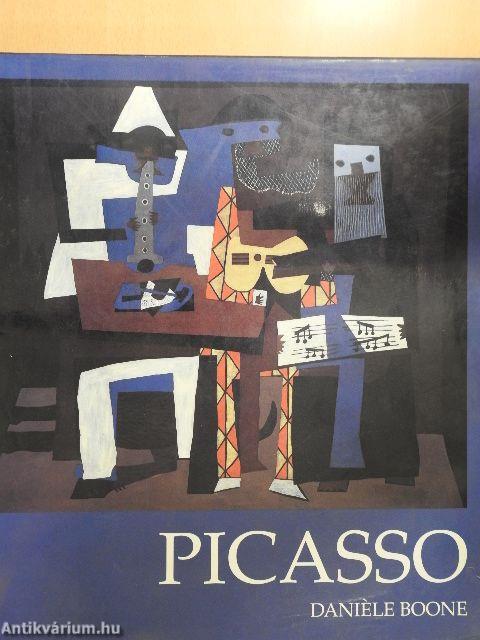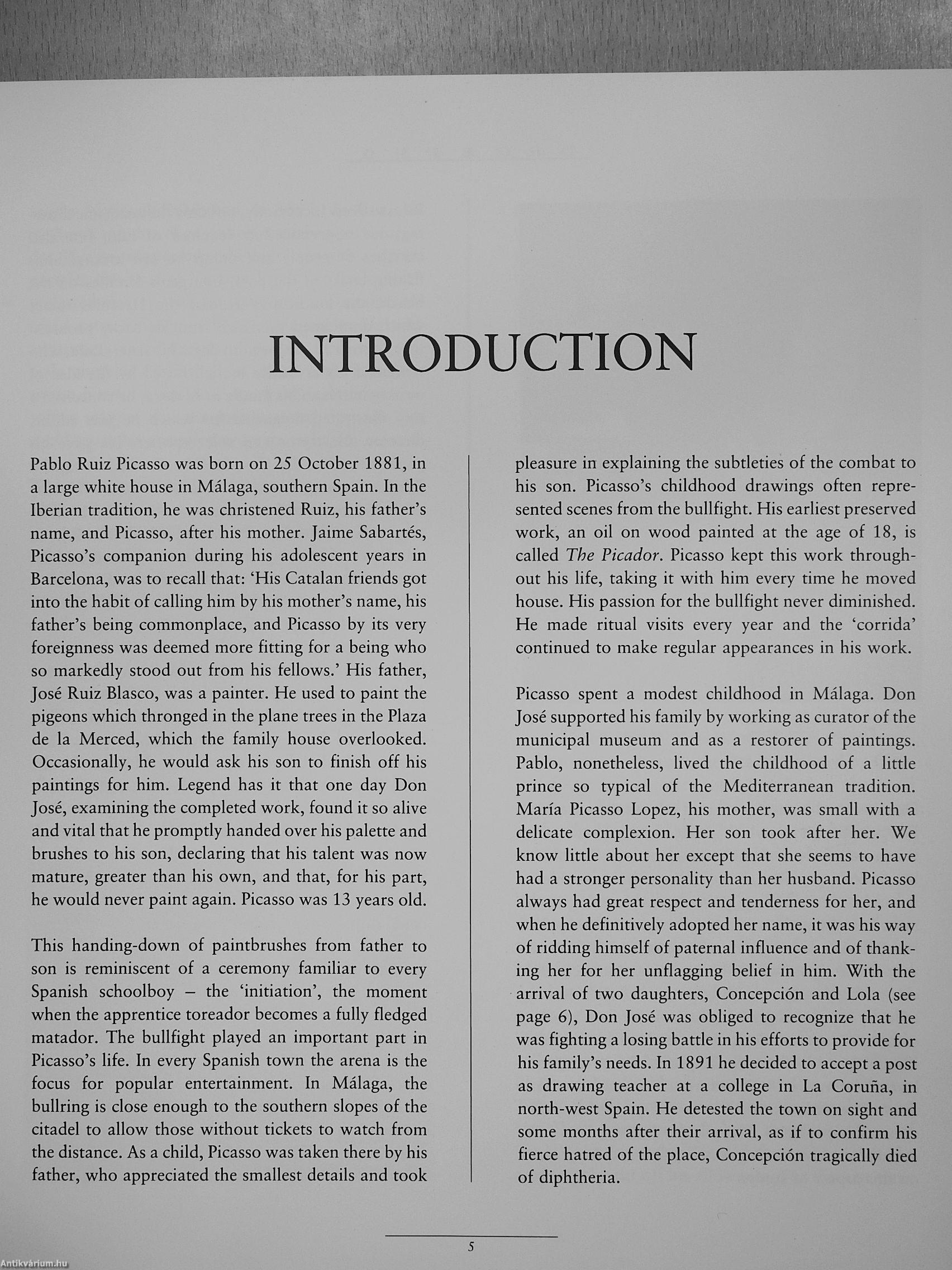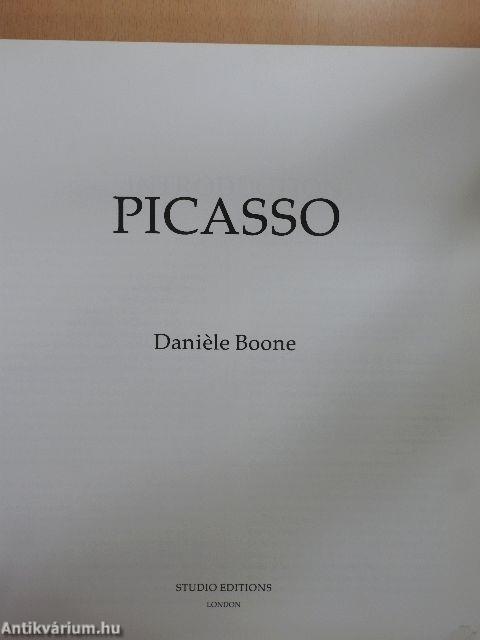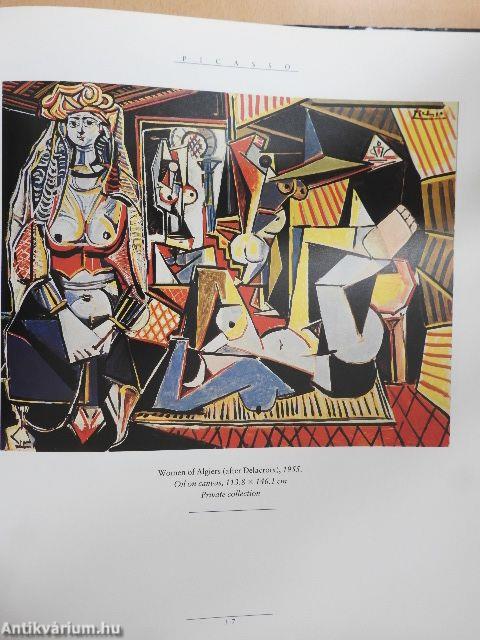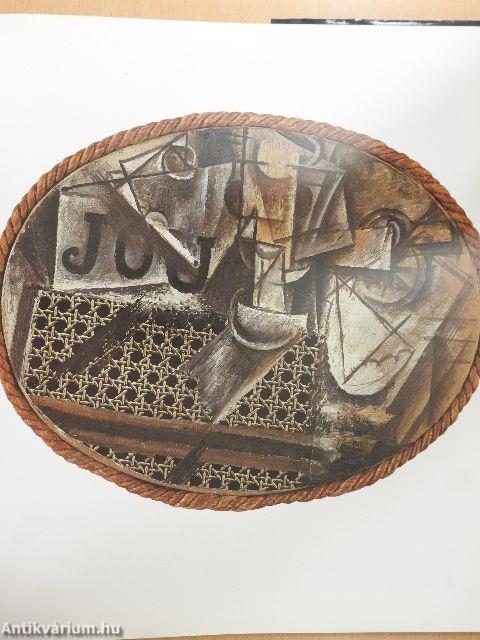1.063.083
kiadvánnyal nyújtjuk Magyarország legnagyobb antikvár könyv-kínálatát

VISSZA
A TETEJÉRE
JAVASLATOKÉszre-
vételek
Picasso
| Kiadó: | Studio Editions |
|---|---|
| Kiadás helye: | London |
| Kiadás éve: | |
| Kötés típusa: | Fűzött kemény papírkötés |
| Oldalszám: | 144 oldal |
| Sorozatcím: | |
| Kötetszám: | |
| Nyelv: | Angol |
| Méret: | 31 cm x 29 cm |
| ISBN: | 1-85170899-5 |
| Megjegyzés: | Fekete-fehér és színes reprodukciókkal. |
naponta értesítjük a beérkező friss
kiadványokról
naponta értesítjük a beérkező friss
kiadványokról
Előszó
TovábbFülszöveg
PICASSO
(1881-1973)
Prolific, experimental and inventive, Picasso is widely regarded as the most significant artist of the twentieth century. From the haunting symbolism of his blue and rose periods, through his development, with Georges Braque, of Cubism, to the iconoclasm of his Surrealist paintings and his final reworking of the Old Masters, Picasso pursued a creative path unmatched by any other modern artist. At an alarmingly early age he had already assimilated the lessons of the greatest painters, but through relentless application he eventually distilled a style that is instantly recognizable for its deceptive simplicity. As he himself once confessed, when looking at an exhibition of children's paintings: 'When I was their age I could draw like Raphael, h has taken me a lifetime to learn how to draw like them.'
Picasso's versatility knew no bounds. Not content to confine his talent to painting, he worked in a variety of media, producing ceramics, sculpture, book... Tovább
Fülszöveg
PICASSO
(1881-1973)
Prolific, experimental and inventive, Picasso is widely regarded as the most significant artist of the twentieth century. From the haunting symbolism of his blue and rose periods, through his development, with Georges Braque, of Cubism, to the iconoclasm of his Surrealist paintings and his final reworking of the Old Masters, Picasso pursued a creative path unmatched by any other modern artist. At an alarmingly early age he had already assimilated the lessons of the greatest painters, but through relentless application he eventually distilled a style that is instantly recognizable for its deceptive simplicity. As he himself once confessed, when looking at an exhibition of children's paintings: 'When I was their age I could draw like Raphael, h has taken me a lifetime to learn how to draw like them.'
Picasso's versatility knew no bounds. Not content to confine his talent to painting, he worked in a variety of media, producing ceramics, sculpture, book illustrations, murals, engravings, lithographs, costume designs and collages.
Daniele Boone has written an informative, highly readable introduction to Picasso's life, tracing his early years in Spain, his mature development in Paris and later years in the South of France. She charts the influence of family life, his art teacher father, his strong mother and his youthful travels around Spain. Boone also studies the friendships Picasso formed in Paris with such figures as Max Jacob, Georges Braque, Jean Cocteau and Paul Eluard - a circle of writers and painters that was to have a lasting influence on the arts in general.
Forty-eight carefully selected full-colour plates reflect Picasso's extraordinary artistic evolution. The images also expose the most important events in his personal life and the world around him: the two world wars in which hehimself never participated, but which claimed the lives of many of his closest friends; the Spanish Civil War reflected in the massive Guernica and the countless women who inspired Picasso to love, to desire and to paint. Vissza
Témakörök
- Idegennyelv > Idegennyelvű könyvek > Angol > Művészetek > Festészet
- Idegennyelv > Idegennyelvű könyvek > Angol > Művészetek > Művészettörténet, általános
- Művészetek > Művészettörténet általános > Kontinensek művészete > Európa
- Művészetek > Művészettörténet általános > Idegen nyelv > Angol
- Művészetek > Festészet > Korszakok, stílusok > XX. század > Avantgárd > Egyéb
- Művészetek > Festészet > Idegen nyelv > Angol
- Művészetek > Festészet > Tanulmányok, összefoglalók > Külföldi
- Művészetek > Festészet > Albumok > Külföldi festők
- Művészetek > Festészet > Általános festészet > Története
Daniéle Boone
Daniéle Boone műveinek az Antikvarium.hu-n kapható vagy előjegyezhető listáját itt tekintheti meg: Daniéle Boone könyvek, művekMegvásárolható példányok
Nincs megvásárolható példány
A könyv összes megrendelhető példánya elfogyott. Ha kívánja, előjegyezheti a könyvet, és amint a könyv egy újabb példánya elérhető lesz, értesítjük.



